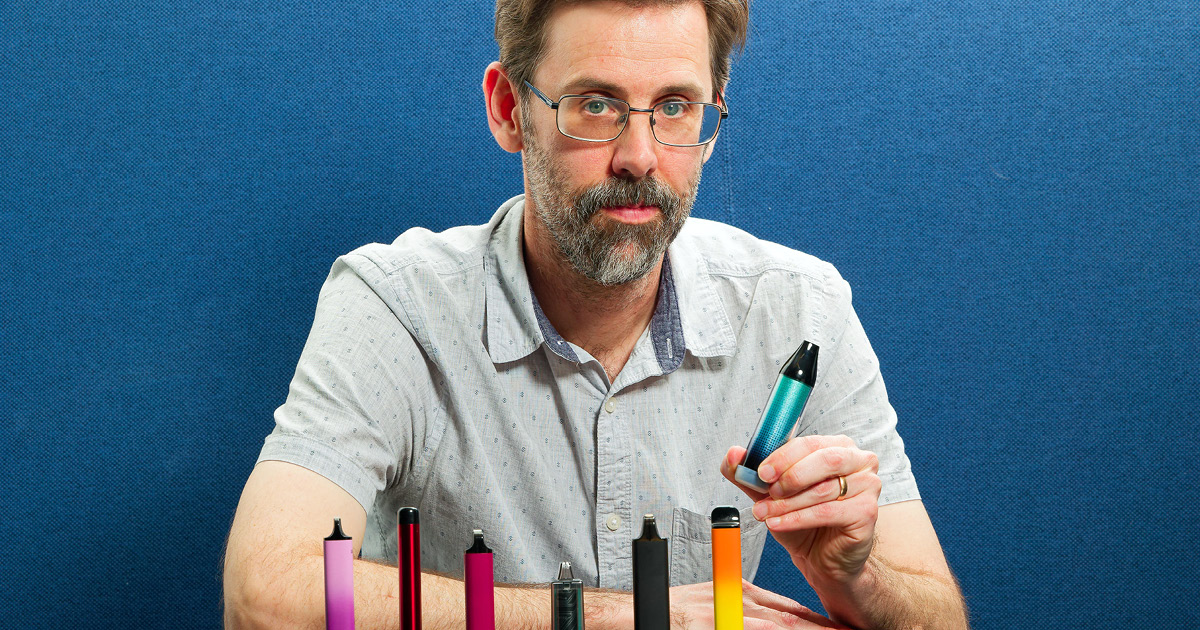Formative research undertaken by The Kids Research Institute Australia has helped inform tough new laws introduced by the Federal Government to reduce the harm caused by vapes.
Associate Professor Alexander Larcombe, Head of Respiratory Environmental Health at the Wal-yan Respiratory Research Centre and from Curtin University’s School of Population Health, has spearheaded perhaps Australia’s leading program of research into the contents of e-cigarette products and the associated health impacts, the findings of which have helped to inform education campaigns, anti-vaping advocacy and policy.
Associate Professor Larcombe’s research has revealed alarming findings about the presence of toxic chemicals in e-cigarettes, exposing that many products labelled as ‘nicotine-free’ actually contain nicotine, acting as a potential gateway to tobacco use.
“Our own research has shown that a significant portion of e-cigarette products available contain nicotine even when they are labelled as nicotine free, and every disposable vape we’ve tested contains nicotine at alarmingly high levels, often the equivalent of multiple packs of cigarettes,” Associate Professor Larcombe said.
“Every one we have looked at also contains other chemicals and substances known to cause respiratory issues or lung damage when inhaled.
“The nicotine in e-cigarettes is particularly concerning from the perspective of young people as we know that its use impacts the developing brain, leading to a range of health and developmental issues.
“Unfortunately, recent research has shown that young vapers are also about three times more likely to take up cigarette smoking, a well-established health hazard.”
On 1 January this year, the Federal Government outlawed the importation of all disposable vapes and it is also moving to stop the manufacture, supply, advertising and commercial possession of non- therapeutic and disposable single- use vapes.
Recognising that research alone is insufficient, Associate Professor Larcombe actively shares his findings and works diligently to influence public perception and policy.
Establishing himself as a credible, reliable, and respectful source of information, he engages with policy makers and regularly participates in media interviews and public events, to educate the public about the dangers of vaping.
Associate Professor Larcombe’s advocacy work throughout the year has included:
- Member of the Minderoo Foundation “uncloud. org” Campaign Reference Group
- Scientific advisor and campaign launch speaker for the Cancer Council WA “Clear the Air” campaign
- Member of the Australian Council on Smoking and Health (ACOSH)
- Member of the National E-Cigarette Monitoring and Evidence Consortium (NEMEC)
- Author of the highly read The Conversation article What’s in vapes? Toxins, heavy metals, maybe radioactive polonium
- Podcast interviewee on the Distance is No Obstacle Podcast produced by Rural Health West, on the topic vaping and e-cigarettes
- Expert interviewee for multiple radio, television, newspaper and magazine stories
The combined impact of Associate Professor Larcombe’s research and advocacy work has helped to shape public perception of e-cigarettes and reinforce the critical message that these products are far from harmless.
This concerted effort has played a pivotal role in informing and supporting the implementation of robust policies to safeguard the health of the Australian youth.
Next steps
- Associate Professor Larcombe’s current research aims to build upon studies examining the toxicity of e-liquids
- A limitation of our previous work is that it investigated the chemistry of the e-liquid, which is not completely representative of the aerosol the “vaper” inhales. This has been seized upon by vaping proponents as a way to discredit existing research work
- Through existing collaborations, our current research is investigating the inhalable aerosols produced by e-cigarettes available to Australians to the level of rigour demanded by regulatory bodies. The research will focus on “puff-bar” type devices which are extremely popular with adolescents
- Work will include comprehensively assessing the “vape” produced by these devices in terms of its physicochemistry (e.g., nicotine, flavourings, metals, particulate matter), and relating these outcomes directly to the resultant health risks, via known chemical exposure guidelines

